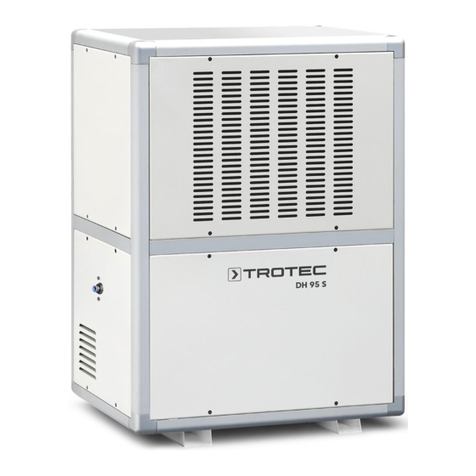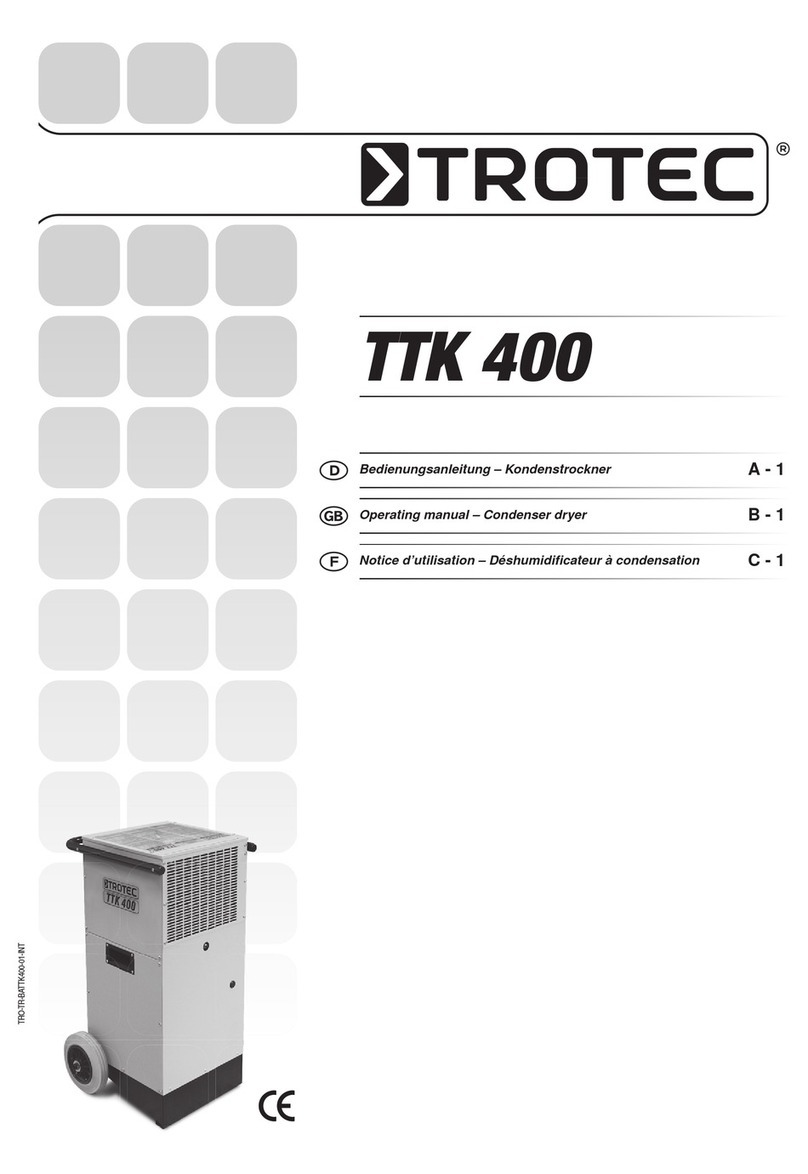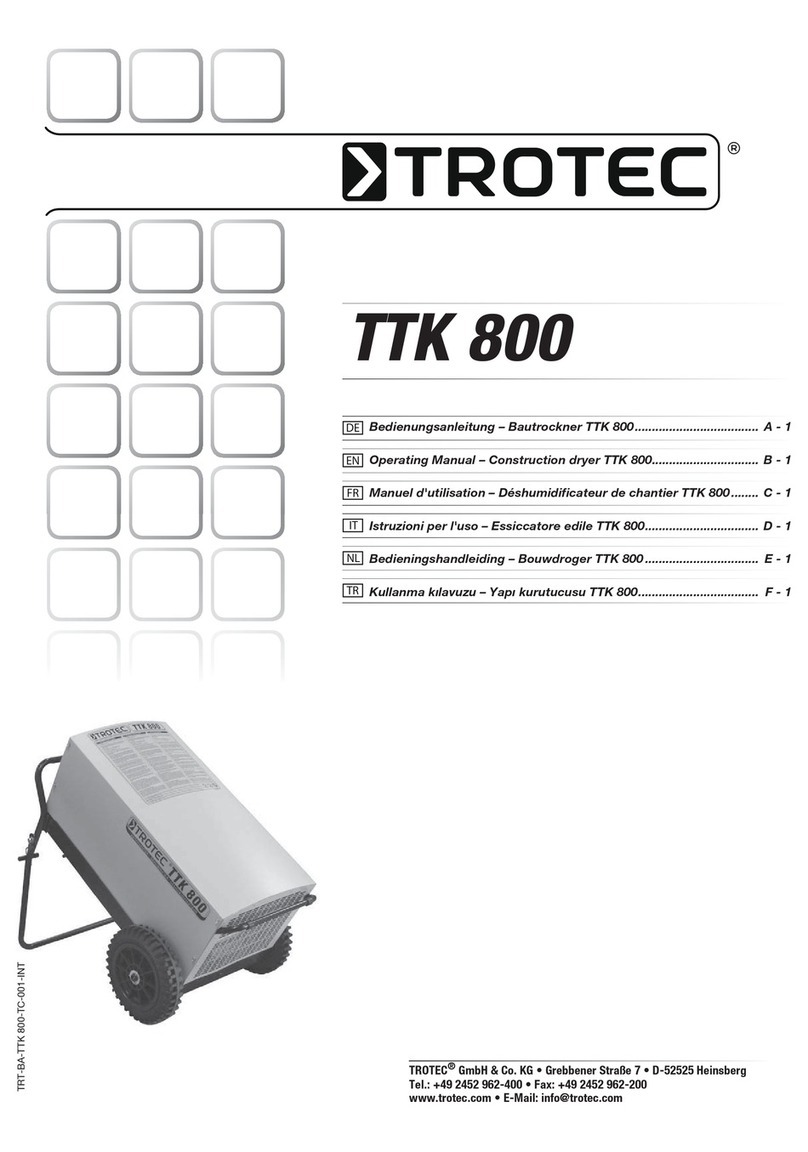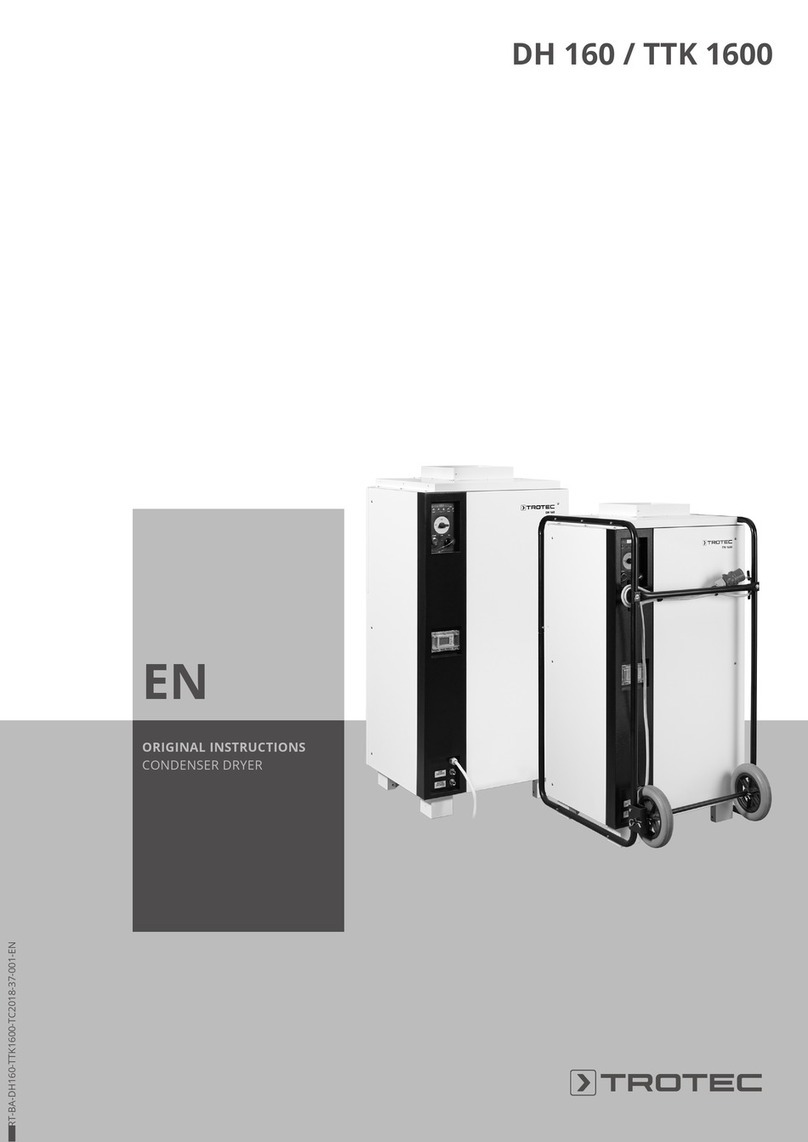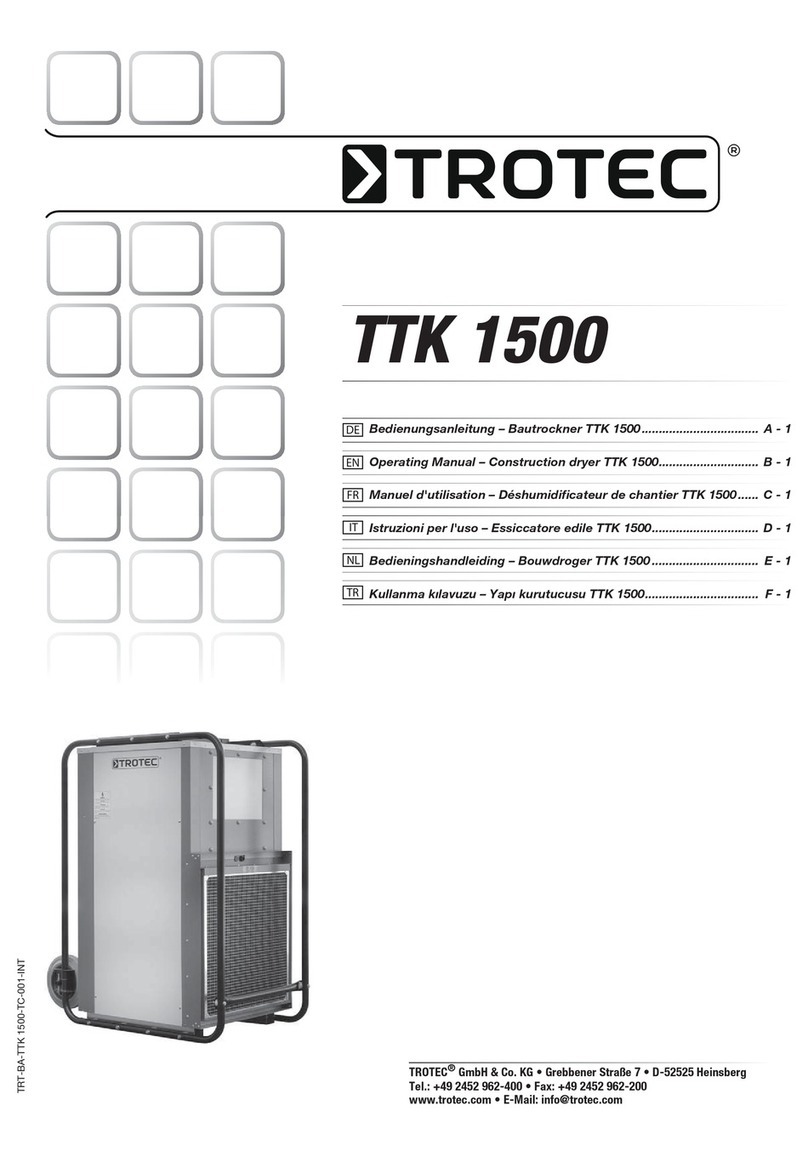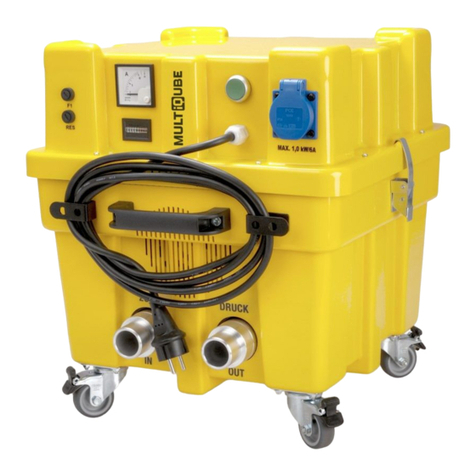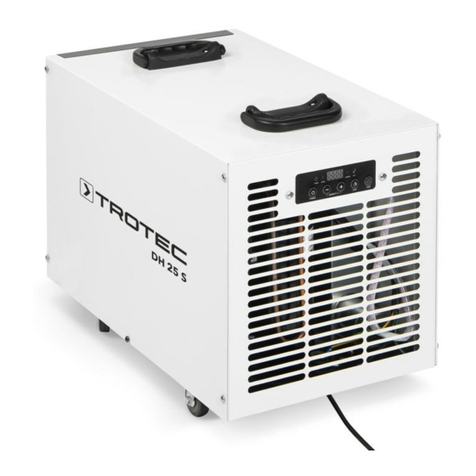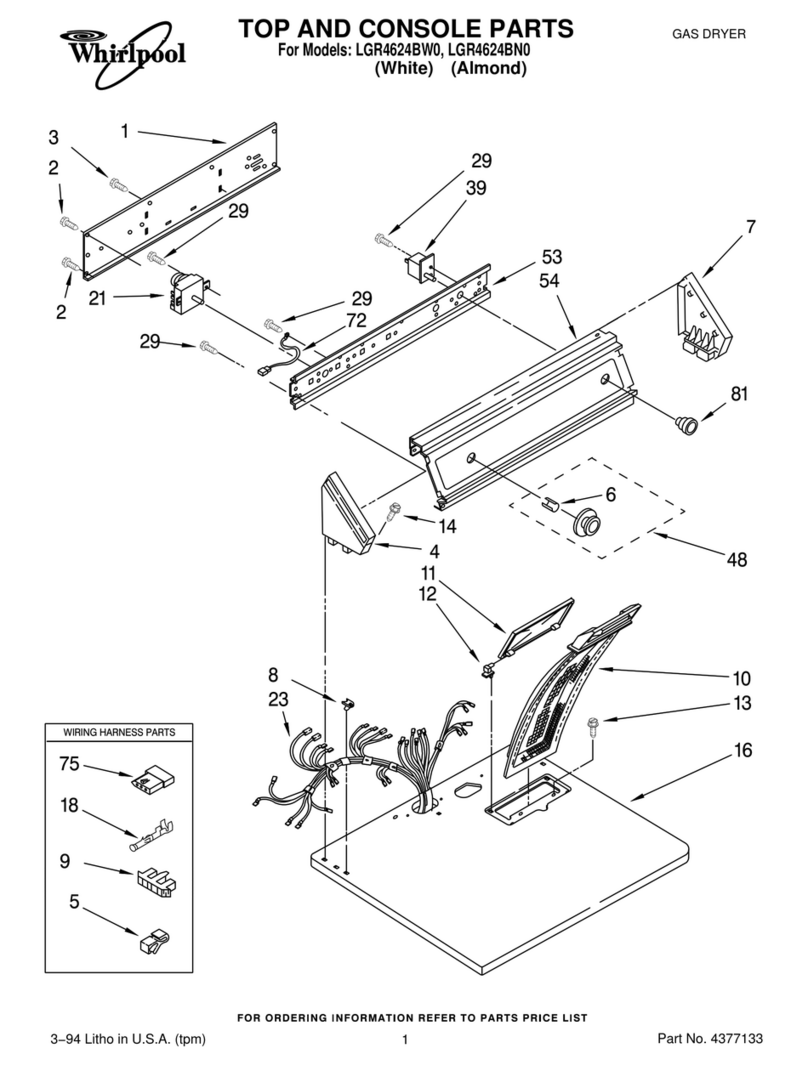
EN 3
condenser dryer DH 160 / DH 310
• The mains connection must correspond to the
specifications in the Technical annex.
• Insert the mains plug into a properly fused mains socket.
• Observe the device's power input, cable length and
intended use when selecting extensions to the power
cable. Completely unroll extension cables. Avoid electrical
overload.
• Before carrying out maintenance, care or repair work on
the device, remove the mains plug from the mains socket.
Hold onto the mains plug while doing so.
• Switch the device off and disconnect the power cable from
the mains socket when the device is not in use.
• Do not under any circumstances use the device if you
detect damages on the mains plug or power cable.
If the power cable is damaged, it must be replaced by the
manufacturer, its service agent or similarly qualified
persons in order to avoid a hazard.
Defective power cables pose a serious health risk!
• When positioning the device, observe the minimum
distances from walls and other objects as well as the
storage and operating conditions specified in the Technical
annex.
• Make sure that the air inlet and outlet are not obstructed.
• Make sure that the suction side is kept free of dirt and
loose objects.
• Do not remove any safety signs, stickers or labels from the
device. Keep all safety signs, stickers and labels in legible
condition.
• Only transport the device in an upright position with an
emptied condensation tank or drain hose.
• Discharge the collected condensate before transport and
storage. Do not drink it. Health hazard!
Intended use
Only use the device as a stationary industrial dryer for drying and
dehumidifying room air whilst adhering to the technical data.
Intended use comprises:
• industrial process and product drying
• drying and dehumidifying:
– production plants, underground rooms
– store rooms, archives, laboratories
– ship engine rooms (for corrosion protection)
– moisture-sensitive goods during transport of water
processing facilities and pump stations (to prevent
condensation on pipes and pumps)
• maintaining the dryness of:
– instruments, devices, files
– electric control devices, boiler plants, turbines and pipe
systems in power plants
– moisture-sensitive loads etc.
Foreseeable misuse
• Do not place the device on wet or flooded ground.
• Do not place any objects, e.g. clothing, on the device.
• Do not use the device out of doors.
• Do not make any unauthorised modifications, alterations or
structural changes to the device.
Personnel qualifications
People who use this device must:
• be aware of the dangers that occur when working with
electric devices in damp areas.
• have read and understood the instructions, especially the
Safety chapter.
Maintenance tasks which require the housing to be opened
must only be carried out by specialist companies for cooling and
air-conditioning or by Trotec.
Electrically skilled person
Electrically skilled personnel must be able to read and
understand electric circuit diagrams, to put electrical systems
into service and to maintain them, to wire control cabinets, to
ensure the functionality of electrical components and to identify
possible hazards from electrical and electronic systems.
Personal protective equipment
Wear safety glasses
For start-up, maintenance and troubleshooting always
wear suitable safety glasses.
Wear a protective mask
For cleaning and maintenance tasks wear an
appropriate protective mask.
Wear protective gloves
For start-up, maintenance and troubleshooting always
wear suitable protective gloves.
Wear foot protection
For transportation, start-up, maintenance and
troubleshooting always wear suitable foot protection.
Residual risks
Warning of electrical voltage
Work on the electrical components must only be
carried out by an authorised specialist company!
Warning of electrical voltage
Before any work on the device, remove the mains plug
from the mains socket!
Do not touch the mains plug with wet or damp hands.
Hold onto the mains plug while pulling the power cable
out of the mains socket.
